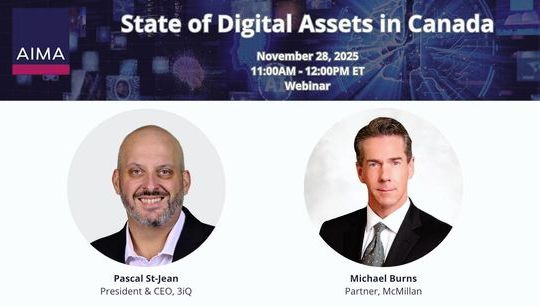When DeFi meets securities laws - A regulatory overview
By Duncan Fitzgerald; Adrian Clevenot; Gaven Cheong, PwC Hong Kong; Tiang & Partners
Published: 20 September 2022
What is DeFi?
Decentralised finance (DeFi) is an umbrella term that encompasses a range of financial services provided on public blockchains.
In this article, we will provide an overview of some of the DeFi assets/strategies from the viewpoint of regulations, and whether managing, dealing in, or advising on, a portfolio of such assets would amount to regulated activity in Hong Kong (thereby requiring a licence from the Securities and Futures Commission (SFC)).
Regulatory framework
Trading, managing of, or advising on, DeFi assets would fall within the local regulatory perimeter, if such DeFi assets constitute securities as defined in Schedule 1 of the Securities and Futures Ordinance (SFO).
Section 114(1) of the SFO provides that no person is allowed to “carry on a business in a regulated activity” without being licensed by the SFC. The relevant categories of “regulated activities” that would trigger a licensing requirement are listed in Schedule 5 to the SFO as follows:
- Type 1 – Dealing in securities
- Type 4 – Advising on securities
- Type 9 – Managing a portfolio of securities or futures contracts
Under Schedule 1 of the SFO, the term securities is defined to include the followings:
“shares, stocks, debentures, loan stocks, rights, options or interests in respect of shares, interests in any collective investment schemes…interests, rights of property, whether in the form of an instrument or otherwise, commonly known as securities.”
In SFC’s statement on initial coin offerings in September 2017, it was stated that digital tokens that amount to virtual commodities would not be securities under the SFO, including situations:
- Where the tokens were strictly ‘utilitarian’ in nature – only provide use rights on digital platforms; or
- Where token holders expected to make a return on their investment by reselling on cryptocurrency exchanges.
However, certain tokens may have terms and features that may render them securities. For example, if:
- holders were given rights similar to holding ‘shares’;
- holders were given rights similar to holding ‘debentures’; or
- the project was managed collectively by the token issuer to invest in projects with an aim to enable token holders to participate in a share of the returns provided by the project (such that it became a “collective investment scheme” (CIS)).
A virtual asset (VA) may also be caught by the definition of a structured product, which is also considered a security.
With these concepts in mind, we will examine the more common types of DeFi assets/activities that are currently the most relevant to VA Funds below.
VA lending
Lending in the realm of DeFi allows VA holders to earn interest on their holdings. A lender is usually paid an attractive annual percentage yield (APY) in return for providing a loan, which resembles closely loans in traditional financial markets. However, it is unlikely that participating in VA lending will be caught by any definition of regulated activities involving securities.
VA loans themselves should not amount to securities unless:
- The loans become centrally managed and administered with a view to providing returns or profits to participants; or
- The loans become unitised or ‘minted’ into other assets that are also freely transferable for value.
Staking
VA holders earn a percentage-rate reward by staking – locking up a VA for a certain period of time. The rewards are usually paid in native tokens and governance tokens of DAOs by participating in a proof-of-stake consensus mechanism without a centralised body. This would appear to be similar to a term deposit arrangement at a bank, where the principal amount being staked does not change, and a regular interest component is paid. The only difference would be that tokens being staked may be withdrawn immediately, although in some cases, an un-staking period may be imposed during which time, tokens being ‘unstaked’ also earn no interest. As such, it would seem unlikely that staking itself gives rise to any security implications – especially where the token being staked is, itself, not considered a security.
Liquidity mining
The majority of decentralised exchanges (DEXs) use an automated market maker protocol (AMM). AMM-based DEXs resolve liquidity issues by incentivising liquidity providers to channel funds into liquidity pools. In this process, liquidity providers deposit their VA assets into liquidity pools. In return, liquidity providers are rewarded newly minted LP tokens (LP Tokens). When the liquidity pool facilitates a transaction, LP Tokens holders will be entitled to receive a fractional trading fee in respect of that transaction.
The analysis as to whether liquidity mining activities can be broken down into several levels. At its most basic, the act of liquidity mining itself should not give rise to any security-type implications. However, when LP Tokens are introduced into the picture – the outcome becomes less clear.
First, the act of providing VA tokens in pairs to liquidity pools is a mere contractual arrangement, similar to a loan. As discussed above, it should not amount to securities.
Secondly, liquidity providers contribute token pairs into liquidity pools in return for profits distributed to them on a pro-rata basis, and there is the prospect of capital gains as well as losses. However, the fact that liquidity protocols act as AMMs and that liquidity contributed is not managed by any centralised entity distinguishes the liquidity mining arrangement from a typical CIS. Therefore, the transaction is unlikely to be one that involves a security.
Finally, LP Tokens provide rights that are akin to the payment of interest or dividends. They are similar to shares as they represent mathematical proof that a party has provided assets to a pool and hold the key to claiming those assets back. LP Tokens may be ‘structured products’, given that they are instruments under which the return is determined by reference to:
- Changes in the price of the underlying contributed tokens
- The occurrence or non-occurrence of any specified event(s) affecting the price of the underlying contributed tokens
As LP Tokens are generally available to retail investors, they would be structured products that are also considered securities.
Where LP Tokens are also capable of being freely transferred or exchanged, the argument for these being securities becomes even more compelling. Given the above, it would be prudent for managers to approach liquidity mining activity with a bit more caution as there could very well be securities involved in the process, especially when one considers the involvement of LP Tokens.
Synthetic assets
Synthetic assets in DeFi, (also known as synths), are conceived as ‘tokenised’ versions of securities in the traditional financial world. These blockchain-based VA derivatives generate their value from the underlying assets which they are simulating, such as stocks or interest rates, and are represented by digital tokens. The holders of synths do not have any rights or obligations which are assigned to the underlying listed equity. Trading in synths does not directly affect the price of real-world counterparts either, as there is no actual buy or sale of the real securities involved.
Synths are likely to be structured products as defined under the SFO, under which the return is determined by reference to either:
- Changes in the price of the underlying securities which they mirror
- The occurrence or non-occurrence of any specified event(s) (for example, macroeconomic, industry or sector specific),
depending on the type of oracle being used. We do not take the view that the interjection of oracles between the synth and the underlying real world security which they mirror removes the derivative nature of the synth (although it should be noted that the regulators of other jurisdictions have taken a different approach. In Singapore, for example, synths are not considered ‘capital markets products’ precisely because of the interjection of oracles into the pricing process).
As these structured products are not restricted to “professional investors” and are intended for access by the retail public, this would make them fall within the definition of a security under the SFO. To this end, it should be noted that in 2021, the Italian Consob, the UK FCA, the German BaFin and the Hong Kong SFC have all issued warnings about ‘tokenised shares’ potentially being securities.
DAOs
DAOs are collectively owned and managed by their members. The smart contract between token holders defines the rules of the DAO and governs the organisation’s treasury. Once the smart contract is live on the Ethereum blockchain, the rules can only be changed by vote.
To the extent DAOs are created for profit making purposes and have elements of a pooling of funds for the purpose of deployment to achieve these objectives, they share some common features with a CIS. However, it is clear that there is no management of this property by a third party for or on behalf of the participants in the DAO, and that the participants in a DAO do have day-to-day control over management decisions. As such, it would be difficult to characterise a DAO as a CIS under the SFO.
Nevertheless, it would still be open to classify the tokens of a DAO as securities, particularly if:
- They provided for regular payments which are akin to payments of dividend
- They provided for voting rights
- Their value (or price) depends on, or fluctuates with, the commercial success of the DAO
In the US, at least, the SEC has concluded that tokens issued by The DAO in July 2017 amounted to securities based on an analysis similar to the above.
As each DAO may be formed for different purposes, one would need to consider their specific characteristics on a case-by-case basis to understand the nature of the tokens they are issuing.
Conclusion
DeFi is a rapidly evolving space that has attracted increasing scrutiny from regulators. Given the recent moves by the SFC and HKMA (in their joint announcement issued on 28 January 2022) to close the loop on VA advisory and VA dealing activities (by intermediaries), and the upcoming VA Service Provider exchange regime, our view is that there is a clear trend towards the establishment of a comprehensive regime that will capture all VA related activities, regardless of whether they are securities or not. It is likely, therefore, that by then, there would be less need to differentiate VA (and DeFi assets in particular) based on whether they are securities or not.









